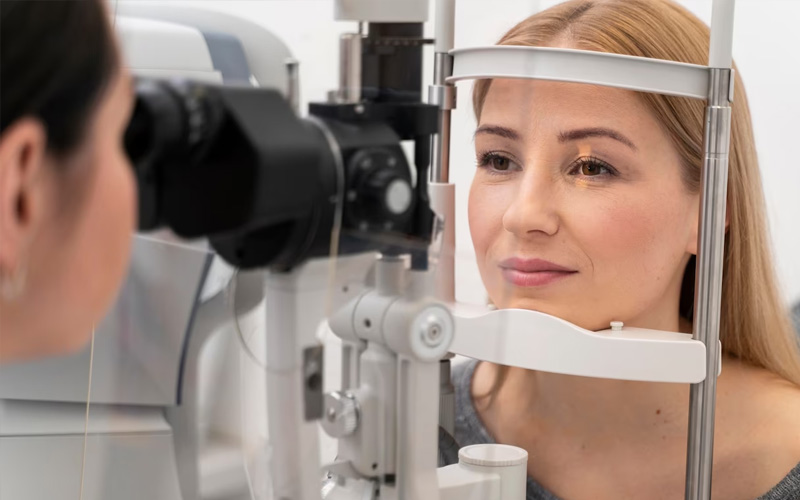Eyelid Drooping (Ptosis)
The term “ptosis,” which means “drooping” in Latin, is used in ophthalmology to describe the drooping of the upper eyelids. Since the upper eyelids are movable tissues, they perform the function of opening and closing. A drooping upper eyelid which is located lower than the original position can cause blockage of the visual field hence worsening of the vision.
During wakefulness, when looking straight ahead (primary position), the upper eyelids must be at a certain anatomical height for proper vision and visual field function. This height is typically positioned so that the upper eyelid covers about 1-2 mm of the cornea (the transparent front layer of the eye). However, due to congenital conditions or aging, the upper eyelid may lose its position and droop to a lower level. This condition is known as ptosis (eyelid drooping).
In such cases, not only does an asymmetrical and aesthetically unappealing appearance occur, but the visual field also narrows, leading to impaired vision. People with ptosis often unconsciously try to compensate by raising their eyebrow on the affected side or tilting their head back to improve their field of view.
Drooping of the upper eyelid, also known as ptosis, can occur for many reasons. Statistically, the most common cause is the weakening or detachment of the muscles that lift the eyelids, which happens with advancing age. This condition, called aponeurotic ptosis, results from the deterioration of muscle function due to aging and genetic predisposition, causing the eyelids to shift lower than their normal position.
Additionally, these muscles may be weak or nonfunctional from birth. In such cases, early examination by an ophthalmologist is crucial. If the amount of light entering the eye is obstructed by the droopy eyelid, there is a risk of developing lazy eye (amblyopia) in that eye. Therefore, even at a young age, eyelid surgery should be performed to adjust the eyelid position and prevent vision loss caused by ptosis.
Other causes of ptosis include various neurological disorders, skeletal muscle system diseases, tumors, or trauma. A thorough evaluation by an experienced ophthalmologist specialized in oculofacial procedures like ptosis is essential for determining the underlying cause and selecting the appropriate treatment.
Congenital droopy eyelid (congenital ptosis) is a highly significant condition that requires careful evaluation. This is because a droopy eyelid that obstructs vision poses a risk for the development of lazy eye (amblyopia). In cases where early diagnosis is not made and necessary treatment is not applied, the treatment options for established lazy eye become nearly non-existent.
It is advantageous for parents to notice droopy eyelids (ptosis) or asymmetry in the early stages of life and seek medical help. These patients should undergo a detailed eye and vision examination to carefully determine whether the droopy eyelid is obstructing vision. Additionally, assessing whether there are any other anomalies in the body can provide insights into the presence of potential syndromic conditions.
Given the sensitivity of congenital droopy eyelid (ptosis), it is crucial to have a detailed examination and follow-up conducted by a specialist oculoplastic surgeon. If necessary, treatment should be initiated without delay to prevent long-term complications.
With the exception of certain neurological disorders, the treatment of ptosis is generally surgical. The goal of surgery, which can be performed under local or general anesthesia, is to lift the eyelid to its proper position, thereby protecting vision and achieving a more symmetrical and aesthetically pleasing appearance.









